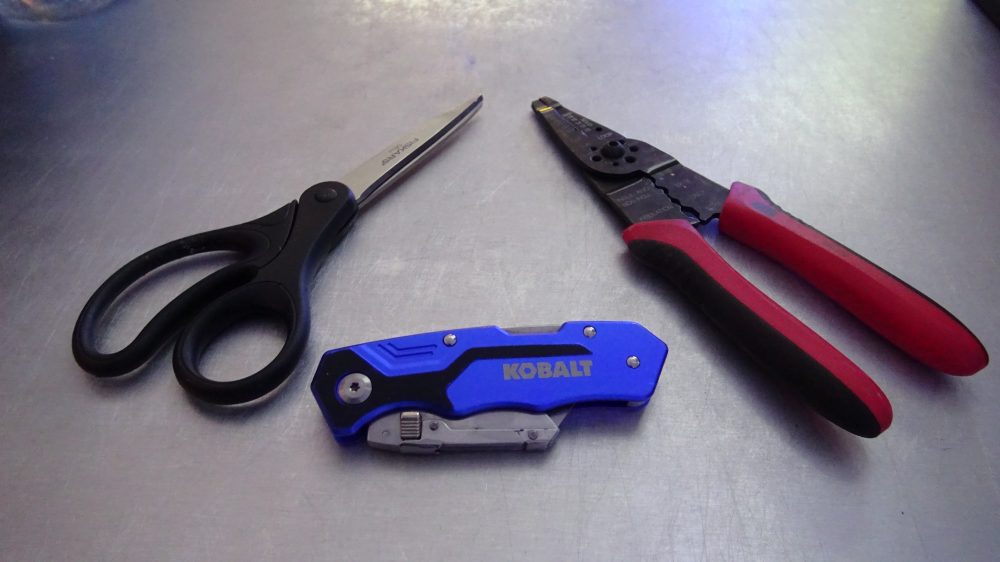In this edition of Tech Tips, we are taking a look at the types of tools that you should have in your tool bag or toolbox. Please note that we are not specifically endorsing any particular brand via photo or link here, just providing these tools as examples. We’ll try and keep it generic so you can shop around for the brand & quality that is best for your budget and situation.
A Driver Kit
A good place to start is with a driver kit (sometimes called a “bit kit”). These are available in many different configurations, offering a number of screwdriver bits that can be swapped out as needed. It is essential to obtain several security bits (they feature a six-point star pattern and a hole in the center),as almost all modern arcade games (American or Japanese) will use bolts that can only be removed using such bits. We would recommend finding a kit that has more bits than a cheaper kit that only come with a handful, as the variety of bolts & screws that have been used in the construction of arcade games over the years is just as varied. It is also recommended to have a hand tool that the bits can fit into (some kits will come with such a tool, others won’t). 
A Rachet & Nut Driver Kit
Along those same lines, while games will use bolts, they also will use nuts. Having a good rachet kit on hand is nothing short of essential when it comes to working on your games. You’ll want nut drivers in both metric and imperial, to cover all of the bases. A good crescent wrench will also be handy for getting into those tighter spots.
Cutting Tools
While some of these tools can fall along the lines of office tools, they still do prove to be handy in an arcade repair situation. That includes sturdy scissors, box cutters (that allow you to swap out blades) and a wire stripper/crimping tool. The latter is very useful for properly working with the wires you’ll find inside of every arcade & pinball machine, no matter what the age. As wires deteriorate due to heat and vibrations, sometimes they need to be cut back and re-crimped or resoldered to an edge connector, or spliced.
An Electric Drill
Whether you are drilling holes into metal or wood, or using the drill with a screwdriver bit, a drill will often come in handy (and of course, this includes a drill bit kit). We still recommend that you have a normal screwdriver or hand device for your bits, as there are some instances where a tight space won’t allow for the use of a drill, but that doesn’t negate the times you’ll need something with a bit more torque. Hammer drills can be very useful, but be careful in using these when bolts are attached to or holding a plastic fixture in place, as the stronger torque but light feeling can end up causing the plastic to crack before you realize it.
 A Digital Multimeter
A Digital Multimeter
Since you are working with electrical components, a voltimeter or multimeters will help determine if and how much current/voltage is going through a wire. Use it on a switch, a board component, a wire (checking both ends) to figure out faults. Basic repairs generally only need something that can detect current and single digit voltage, but if you’re looking into doing more complex repairs, you’ll need to spend more to get all of the features. Here is a video that shows you how to use such devices; whether it’s the “best” in the world, we’ll leave that up to you to judge:
A Soldering Iron
While this is mostly useful for doing circuit board repairs (often with “cap kits” to rejuvenate/repair old CRT monitors), it is often needed for wire-to-switch repairs, such as in cases where a crimped connector was not used and the connection was made by soldering the wire directly to the switch edge.
Soldering irons usually allow you to switch out the tips, so that when one gets old, you can replace that one component. It is also a good idea to get some steel wool (for cleaning), solder, and a desoldering pump to remove excess solder from the area. There are some soldering irons with a desoldering pump built right into them, although they may not work in tight situations (they are perfect for board repair when you’ve removed the board from a game). Here’s another useful tutorial if you are unfamiliar with this tool, but it’s certainly not the only one out there!



